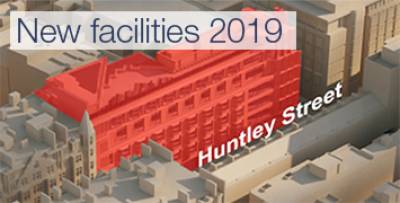Regulation of post-Golgi LH3 trafficking is essential for collagen homeostasis
20 July 2016
Banushi B, Forneris F, Straatman-Iwanowska A, Strange A, Lyne A M, Rogerson C, Burden J J, Heywood W E, Hanley J, Doykov I, Straatman K R, Smith H, Bem D, Kriston-Vizi J, Ariceta G, Risteli M, Wang C, Ardill RE, Zaniew M, Latka-Grot J, Waddington S N, Howe S J, Ferraro F, Gjinovci A, Lawrence S, Marsh M, Girolami M, Bozec L, Mills K, Gissen P.
Nature Communications
Post-translational modifications are necessary for collagen precursor molecules (procollagens) to acquire final shape and function. However, the mechanism and contribution of collagen modifications that occur outside the endoplasmic reticulum and Golgi are not understood. We discovered that VIPAR, with its partner proteins, regulate sorting of lysyl hydroxylase 3 (LH3, also known as PLOD3) into newly identified post-Golgi collagen IV carriers and that VIPAR-dependent sorting is essential for modification of lysines in multiple collagen types. Identification of structural and functional collagen abnormalities in cells and tissues from patients and murine models of the autosomal recessive multisystem disorder Arthrogryposis, Renal dysfunction and Cholestasis syndrome caused by VIPAR and VPS33B deficiencies confirmed our findings. Thus, regulation of post-Golgi LH3 trafficking is essential for collagen homeostasis and for the development and function of multiple organs and tissues.
We have demonstrated that LH3 targeting from the TGN to the newly described collagen IV-containing organelles is regulated by VIPAR and its interacting proteins. Furthermore, a reduction in LH3-specific modifications was detected in ARC patients’ urine, and structural defects in collagen I were found in tail tendons from VPS33B- and VIPAR-deficient mice. The collagen abnormalities identified in skin fibroblasts and tendons consistent with the characteristic ARC features of ichthyosis, arthrogryposis, osteopaenia and bone fractures suggest an important role for VPS33B- and VIPAR-dependent LH3 trafficking in connective tissue.
We therefore present evidence that regulation of LH3-collagen modification by this novel VIPAR-dependent trafficking pathway is crucial for cell differentiation and tissue morphogenesis.
Further work is required to demonstrate why collagen IV carriers are the preferred location for the LH3-dependent collagen IV modification and whether they have a role in homeostasis of other basement membrane components.
 Close
Close





